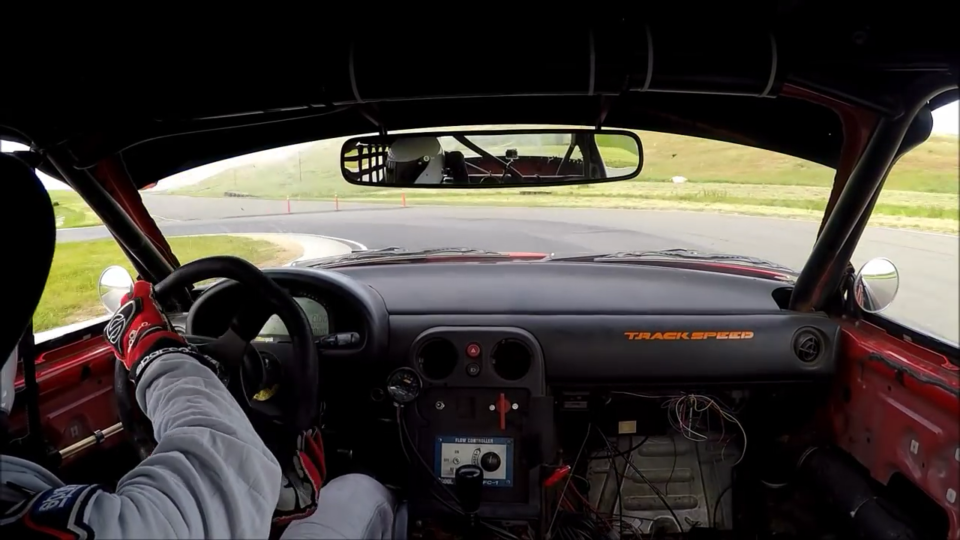Andrew Kidd’s turbocharged Miata is no stranger to these pages. Nicknamed “Rover,” this particular car runs in NASA ST4 and SuperMiata S1, and also serves as the test mule for the parts he develops through his company, Trackspeed Engineering.
The way he’s modified this Miata makes it perfectly suited to the confines of Thunderhill West. Obviously, the short wheelbase aids in rotation through the numerous hairpins at Thunderhill West; immediately showing its propensity to zero-steer through Turn 10, the final corner leading onto the front straight. Just as obvious is the response of the engine, since the turbocharger comes on-song immediately and progressively, and fires him out of the hairpin with enough force to just spin the 10-inch Hoosier R7 slicks.
Chalk that ideal delivery to a simple list of well-chosen parts: An MSLabs MS3 ECU, Flow Force 640cc injectors, a Deatschwerks DW200 fuel pump helps provide the right mixture, a Borg-Warner EFR2658 turbocharger, and a Skunk2 64mm throttle body controls the flow of air. This setup produces 215hp and 204 lb-ft to the rear tires at a reliable ten pounds of boost. Most importantly, 90 percent of that torque is available from 3,500-6,200 rpm; perfect for the tighter corners which dominate the course.

Photo credit: Trackspeed Engineering
As progressive as the motor may be, it’s still powering a short and light car; weighing just 2,380 pounds. That, combined with the broad slicks which support it, means the breakaway is quite sudden (0:22). It’s a fairly edgy car, but as the course lacks long corners in which g-forces are endured for a long period, its edginess works in its favor.
“That track has no real high-speed max-G sessions, so steady state balance is probably less important there than any other track,” Kidd adds. For that reason, “you would want the car to rotate, but I would also run more wing and more rear toe there than anywhere else.” This is probably best demonstrated through the Turn 7 hairpin. The natural agility of the car and a stock rear swaybar help the car steer in early, and take a slightly shorter route through the corner; agile enough to avoid a conventional diamond line.
Considering the smooth arc into the corner, the car delivers the power, virtually from a standstill, with next to no wheelspin. Considering only a stock Torsen differential is delivering the power, it’s commendable. Though, Kidd’s measured right foot deserves some credit as well.
That said, even Kidd is capable of “goofing,” as he puts it. Though Thunderhill West is devoid of any truly fast corners, Turn 4A is one which does get the aerodynamic elements working—a custom airdam, splitter, and an APR GT-250 64-inch aerofoil in Kidd’s case. At these speeds, the rear aerofoil helps plant the rear, and it can contribute to some aerodynamic push. As visible at 0:43, the car begins to push slightly when Kidd rotates too early. Taking a little more curb than intended, Kidd proceeds undaunted. It’s a bold, yet measured lap, in a stellar track car that likely has few rivals at such a technical track, and a video anyone visiting the course should study.






















